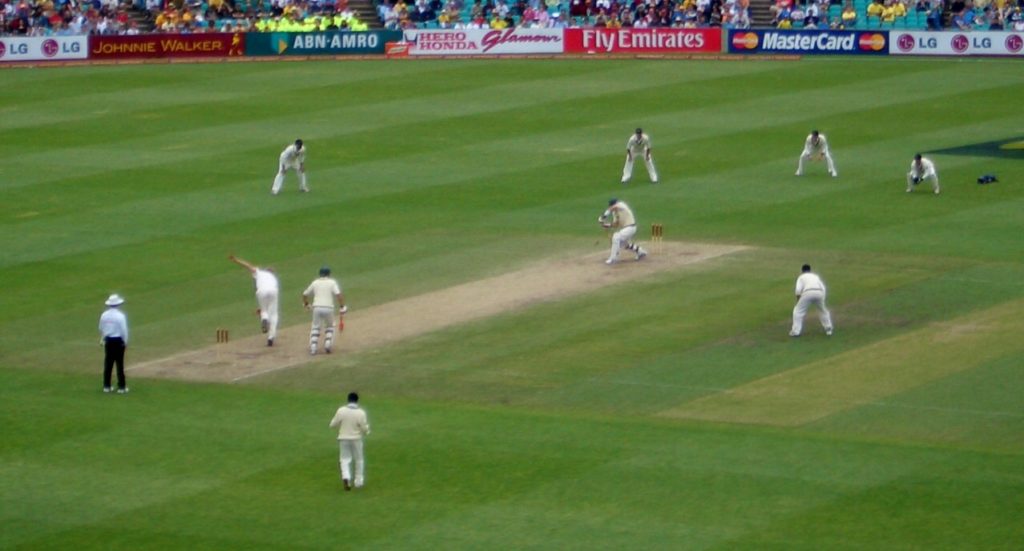There are so many reasons why fast bowlers keep getting injured, not only the Australians, but pacemen around the world.
Jock Campbell, a leading expert in athlete high performance, strength and conditioning, gives his insight into the injuries of fast bowlers.
Bowling is an unnatural activity in which one side of the body is favoured and immense forces are generated through muscles, bones, tendons and joints on very hard surfaces.
Brett Lee has 15 times his body weight going through his front foot in his delivery stride, which imparts incredible stress on his ankle (six operations), knees and back (two stress fractures). Compare this to Glenn McGrath who bowled about 15km/h slower than Lee and he still had 12 times his body weight going through his front foot. Yet both bowlers were in relatively good shapre throughout their careers. In particular, Lee has maintained his pace over a career spanning around 15 years, setting an incredibly high benchmark for his counterparts. Is he to blame for the high expectations we have of the current crop?
But let’s have a look at the recent increase in injuries. What are the contributing factors and what can be done about it?
Speed guns
Speed guns simply don’t allow bowlers to slow down. Every ball a paceman delivers is highly scrutinised and they’re now expected to be at top pace throughout their spells, like Peter Siddle has been over the past two seasons. The pressure on bowlers to push the physical boundaries of performance is constant and year round! To succeed in international cricket players have to constantly strive to improve and a fast bowler is always looking to bowl that little bit quicker and for longer periods. Ten years ago there were only three bowlers in world cricket who bowled regularly above 140km/h – Brett Lee, Shoab Ahktar and Jason Gillespie. Nowadays there are many bowlers around the world who hit those speeds. Whenever athletes push their physical limits of performance and training there is the risk of injury. It’s a fine line between having athletes in peak physical condition and having them injured, but if Australian cricket wants to be the best, boundaries of performance must be pushed.
Workload
Then we come to bowler workload which is an amalgamation of how much a bowler bowls in practice and matches, and is looked at in terms of balls bowled per day, week, month and year. There’s been enough research done in this area to have some good recommendations, but not enough on the right type of bowlers to have all the answers. What we do know is that if we have large increases in the volume of bowling in a short period of time we increase the chance injury. This is common for any physical activity; large jumps in volume or intensity over a short period of time increase injury risk.
Research clearly shows that back-to-back Tests increases this injury risk. In fact, statistics have shown that the risk of injury to a bowler who plays back-to-back Tests increasesby 87%. It’s worth noting Australia and Sri Lanka’s bowling attacks over the Boxing Day and New Year Tests to see if both teams are intact at the end. Cricket authorities are aware of this issue, but often have their hands tied because of packed schedules, TV rights, IPL windows and future tours.
State Cricket pre seasons
Another miss-match is players coming from state cricket, which has a six month off-season. Australia aspirants should be preparing, physically, to withstand the increase in workload from state cricket to international cricket. Instead, some of these players are enjoying three months off at the end of a season. I’m sorry, but for a fast bowler this doesn’t work! Being a fast bowler is a year-round proposition if you want to be consistently successful and help bulletproof your body from injury. State cricket should be helping to have our bowlers in far better shape and likewise, bowlers should be taking responsibility for themselves and should be doing some extra training. McGrath, Lee, Gillespie and Siddle did/do. You can have four weeks off at the end of the season, but then back into it!
Increased intensity in International cricket
What we are also noticing is that young bowlers who come from Shield cricket are bowling up to 5km/h an faster for Australia. Whether that’s adrenalin or the pressure of bowling to top quality batsmen, it’s having an impact. T20 batsmen are also coming harder at bowlers, so to look at just bowling volume is quite obtuse. It’s the jump in intensity every time the players bowl that also adds to the physical stress. It takes hard work to get into international cricket, but it’s not until you make it that you realise just how much is required to stay there.
Twenty20 cricket
The advent of several T20 series around the world that pay massive money for players has added a new dimension to the game. Where players once would have had a short rest period, or be in the middle of a tough pre-season, they’re now in the midst of high pressure T20 tournaments. This is a problem because their volumes of workload – from a Test match perspective – drop off. Australia first suffered because of this on the 2010 tour of India when Doug Bollinger’s lead-up was centred on the Champions Trophy with Chennai. He came into the First Test in poor shape and got injured. He was a key loss for that series. Ben Hilfenhaus and Jacques Kallis have both suffered from a similar build-up to this summer. One answer is that players will again need to rake on the responsibility of training through these tournaments, whilst leaving themselves fresh for the games. This can be done and Cricket Australia have got some processes in place to try to achieve this.
Older bowling professionsals
In days past, bowlers like Andy Bichel, Michael Kasprowicz and Matt Nicholson played Shield cricket for many years before taking the next step. This allowed younger bowlers a gradual procession into profesional ranks. Nowadays, these rich T20 competitions are luring the cream of senior fast bowling ranks, meaning that youngsters are being exposed to increased workloads at a domestic level. To prove my point, Brett Lee, Dirk Nannes, Sean Tate, Lasith Malinga still have plenty to offer State cricket, but are plying their trade elsewhere. This puts far greater stress on young developing bowlers and we’re now seeing the detrimental results.
Young fast bowlers
The problem with young fast bowlers being pushed up the ranks too quickly is that their bones are not hardened enough. Research shows this often doesn’t happen until they are in their 20s. Pat Cummins is a classic example. Athough being talented and skilled enough to make a great contribution at international level, because he is a teenager his body simply isn’t ready. What he needs is an action assessment to rule out any counter-rotation issues, a gradual build-up in his bowling volume over a couple a years, coupled with building his overall body strength and power. This would ensure adequate flexibility in the right areas, would build his endurance and gradually bring up his sprinting technique and running volume.
Michael Clarke
Pup’s hamstring problems will mostly be referred problems from his severely degenerated spine. He is exceptionally well conditioned and has worked very hard on reducing the risk and incidence of these. As I’ve mentioned in the past, he will still get problems due to the nature of his back. It was a good sign to see him on the field on day five of the First Test and I think he will be ok for the Boxing Day Test.
Peter Siddle
A good sign for the current attack comes in the form of Peter Siddle and Mitchell Johnson. I think Sidds has done what all of the bowlers need to do and taken some responsibility onto his own shoulders. Glenn McGrath said on The Cricket Show during the Hobart Test that if you want to do what everyone else does you won’t be any better than them. Siddle has changed himself over the past couple of years. He’s started training earlier than others in pre-season, with AFL club Carlton. He has even stepped up this year by dropping all excess body fat and increasing his strength. This has helped him maintain his bowling pace, as was evident in the 60 overs he bowled in the heat in Adelaide Test. He’s done this through hard work, a strict diet and not drinking any alcohol, as Brett Lee did successfully in 2001-2002. Nothing against alcohol, but as a professional athlete studies have shown a drinker is 100% more likely to suffer an injury compared to someone who doesn’t drink. I also like that Siddle is specialising in Test cricket only at the moment. This could be the way of the future. I don’t think many cricketers will be able to play all three forms of the game.
Mitchell Johnson is another who has gone off, got extremely fit and strong and even got help from the great man Dennis Lillee to come back in great shape and bowling well. Youngsters take note that these guys are onto something!
Loss of human resources
Through the advent of T20 cricket and other sports around Australia valuing sports science and medicine more than Cricket Australia, the sport has lost several experienced human resources over the past 7-10 years. Great Australian physiotherapist Errol Alcott went to rugby league, research guru and NSW stalwart Patrick Farhart went to IPL, and the Queens;and Bulls’ Steve Partridge returned to private practice. There’s around 60 years of cricket physio at the highest level, lost. Then there’s the strength and conditioning side of things. All previous Australian cricket team physical performance managers are out of cricket in Australia. David Misson and Justin Cordy are with the AFL, Stuart Karpinen is with Bangladesh cricket and I’m working privately. Altogether, there’s around 100 years of experience in sports medicine lost by Australia. Surely this must have some impact.
The solution isn’t one particular aspect. The keys are to have no drastic increases in workload or intensity and make the bowling preparation a year-round proposition. The rotation system that the Aussies are talking about, particularly through ODI’s and T20 series, has great merit. It’s also important to note that when bowlers are being rotated they shouldn’t be resting. They will have a reduced bowling workload, but in many cases they should be training physically through that period to boost other areas that help in preventing injuries and improve performance. Gone are the days of looseners, medium pace spells and putting your feet up for months.
Originally posted jockathletic.com 19th December 2012






















